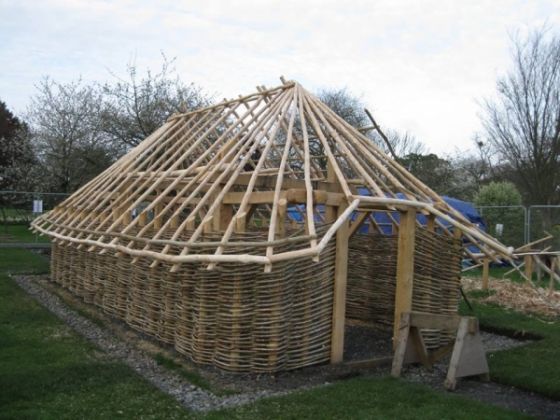Botanic Gardens hosts Viking structure
Construction of a Viking house using traditional building material and methods is nearing completion on the grounds of the National Botanic Gardens in Dublin.
The house is designed to be a faithful replica of similar Viking buildings excavated at Dublin's Wood Quay archaeological site in the 1970s and 1980s, and represents the first structure of its kind to be built in the capital for 1,000 years.
The project is largely the handiwork of carpenter Eoin Donnelly who has harvested, shaped and positioned the oak, ash and hazel used in the structure. The house is built on an oak frame, has 44 ash rafters and its hazel walls were weaved together using the wattling method. Although all the wood used in the house is Irish, the 1,400 bundles of water reeds used in the roof have come from Poland.
Mark Compton, who thatched the house, explained that "We haven't got any good Irish reed any more because the rivers and lakes have got too polluted." These days Irish waters contain too much nitrate fertiliser which renders the reeds weak and means they have a short lifespan if used as thatch.
Over the last two months the Botanic Gardens website has provided a fascinating visual diary detailing the daily progress of the project and describing the building processes along the way.
The house is built to last at least 25 years, and is being used as an educational resource in addition to the Dublinia viking and mediaeval museum in Christchurch. Tourists in Dublin can also avail of a popular Viking Splash tour which takes visitors, equipped with helmets, on a Viking journey on Dublin's streets and on the river Liffey.
The largely pagan Vikings raided Ireland (already Christian) throughout the ninth and tenth centuries, sacking the monasteries for their treasures and terrorising the inhabitants in the surrounding countryside. Norse settlements were established in several places along the the coast, subsequently becoming the towns of Dublin, Waterford, Wexford, Cork and Limerick.












